
Do you have a question about the Endress+Hauser SpectraSensors SS2100 and is the answer not in the manual?
| Brand | Endress+Hauser |
|---|---|
| Model | SpectraSensors SS2100 |
| Category | Measuring Instruments |
| Language | English |
This manual should be read and referenced by anyone operating the analyzer.
Instructional icons are provided to alert the user of important information and valuable tips.
Explains how to navigate between sections using "hot links".
Information about SpectraSensors, Inc., its history, and acquisition.
Provides the company's contact address and website.
Describes how firmware version is listed and displayed.
Step-by-step guide on how to power up the analyzer.
Procedures and considerations for powering down the analyzer.
Explains how to use the keypad to access modes and functions.
Mode 1 continuously displays updated measurements.
Mode 2 enables user to view and change measurement parameters.
This mode is not utilized in the firmware.
Displays system diagnostic data useful for troubleshooting.
Used to turn on the 4-20 mA current loop for test and calibration.
Transfers diagnostic data to the serial port for analysis.
Switches the analyzer to measure validation gas supply #1.
Switches the analyzer to measure validation gas supply #2.
Recalls the measured value from the last autovalidation cycle.
Views real-time reading of the 4-20 mA analog input state.
Guides on configuring analyzer parameters at start-up.
Procedure for checking and verifying analyzer settings at start-up.
Explains how to view and change measurement and control parameters in Mode 2.
Step-by-step guide for changing parameters within Mode 2.
Definitions for measurement and control parameters.
Sets the port for two-way communications, including Modbus.
Determines current loop state upon an alarm condition.
Sets operation mode of 4-20 mA current loop during validation.
Sets pressure (mbar) corresponding to a 4 mA analog input.
Sets pressure (mbar) corresponding to a 20 mA analog input.
Enables/disables live pipeline pressure via analog input.
Sets concentration or dew point temperature for 4 mA output.
Sets current loop output for testing and calibration.
Sets concentration or dew point temperature for 20 mA output.
Sets the baud rate for the customer RS-232 port.
Enables/disables calculation and display of dew point temperature.
Cancels validation alarms and resets validation flags.
Designates display units for measured concentration.
Sets the number of viewable digits to the right of the decimal.
Enables or disables the time of day autovalidation feature.
Sets the industry standard method for dew point calculation.
Sets the functionality of the Assignable Alarm.
Sets the operation of the general alarm relay digital output.
Determines concentration threshold for Concentra High Alarm.
Sets allowable time on MODE/password screens before reverting.
Sets the number of measurements included in the running average.
Determines concentration threshold for Concentra Low Alarm.
Sets the analyzer address for Modbus device use.
Sets the communications protocol for the selected port.
Enables setup of Operator Parameter section with parameter indices.
Enables or disables a password requirement for Operator Parameter section.
Adjusts laser current to keep absorption peak centered.
Sets pipeline pressure for dew point calculation or displays input.
Designates display units for measured absolute pressure.
Enables or disables user-definable adjustments.
User-definable value for adjusting analyzer response/slope.
User-definable value for adjusting analyzer offset.
Sets the current day for clock driving daily validations.
Sets the current hour for clock driving daily validations.
Sets the current minute for clock driving daily validations.
Sets the current month for clock driving daily validations.
Sets the current year for clock driving daily validations.
Initiates the validation cycle.
Designates display units for measured cell temperature.
Updates RATA parameters with latest calculated values.
Sets the concentration value of validation gas supply #1.
Sets the concentration value of validation gas supply #2.
Sets max validation failures before stopping autovalidation.
Determines if Mode 6 dump occurs after each validation.
Sets the tolerance (±%) for validation measurements.
Sets time (seconds) for validation gas to purge the system.
Sets the number of days between autovalidation cycles.
Defines the system constant determined at the factory for calibration.
Defines the permeation rate in ng/min referenced on certification.
Sets the hour of the day for daily validation to begin.
Sets maximum acceptable reading when validating with zero gas.
Guides on adjusting analyzer reading to match concentration standards.
Step-by-step instructions to adjust analyzer readings using standards.
Provides examples for setting up manual and semi-automatic validations.
Example for setting up dual validation using two standards.
Example for setting up semi-automatic validation with one or two standards.
Details on automatic validation based on time parameters.
Explains how validation is conducted automatically, semi-automatically, or manually.
Steps for automatic validation using gas standards.
Steps for semi-automatic validation via DI or parameter.
Steps for manual validation using Modes 7 or 8.
Guides on scaling and calibrating the 4-20 mA current loop signal.
Step-by-step procedure to scale the current loop signal.
Lists warning messages that appear on the front panel LCD.
Describes the analyzer's alarm system and relays.
Lists faults that trigger the General Fault Alarm relay.
Describes alarms generated based on measurement readings and parameter settings.
Explains how Assignable Alarm functionality is determined by DO Alarm Setup.
Information on analyzer calibration by SpectraSensors.
Steps to switch between calibration methods using the keypad.
Procedure to measure Stream 1 using the keypad.
Procedure to measure Stream 2 using the keypad.
Configures analyzer to transfer data via customer port output.
Steps to launch HyperTerminal for serial communication.
Describes the tab-delimited data string format from HyperTerminal.
Instructions for capturing and saving serial data.
Steps to read diagnostic data using HyperTerminal.
Labels for columns of tab-delimited data from a Mode 6 dump.
How to import and view Mode 6 data in Excel.
Step-by-step guide to import data files into Excel.
Overview of the Modbus serial communications protocol.
Details transmission modes and port parameters for Modbus.
Lists available Modbus functions (read/write registers).
Describes register types for Daniel Modbus.
Describes register types for Gould Modbus.
Explains byte ordering in data representation.
Steps to enable Modbus communication on the analyzer.
Discusses Modbus slave node address range and conventions.
Definitions for Modbus accessible parameters.
Guides on configuring the Ethernet port for network communication.
Steps to configure Ethernet port settings via Telnet.
Steps to configure Ethernet port settings via the Web Manager.
Sets the network mode for Ethernet connectivity.
Assigns an IP address automatically and configures related settings.
Steps to automatically assign an IP address.
Assigns a static IP address and network settings manually.
Specifies speed and direction of data transmission.
Configures data transmission speed and direction.
Configures a channel's TCP connection settings.
Steps to configure TCP settings for a channel.
Recommendations for cleaning gas sampling lines to prevent contamination.
Discusses issues with gas temperatures and pressures outside allowable ranges.
Procedure to reset the peak tracking function if it malfunctions.
Step-by-step instructions to reset the peak tracking function.
Lists common instrument problems and their solutions.
Information on how to contact SpectraSensors for service.
Information to prepare before contacting service for inquiries.
States SpectraSensors' no responsibility for consequential damages.


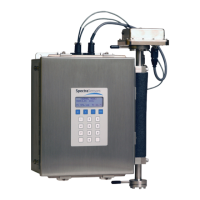

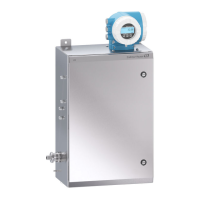

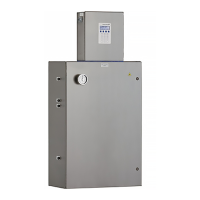



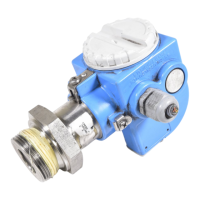
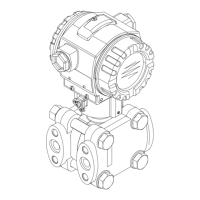
